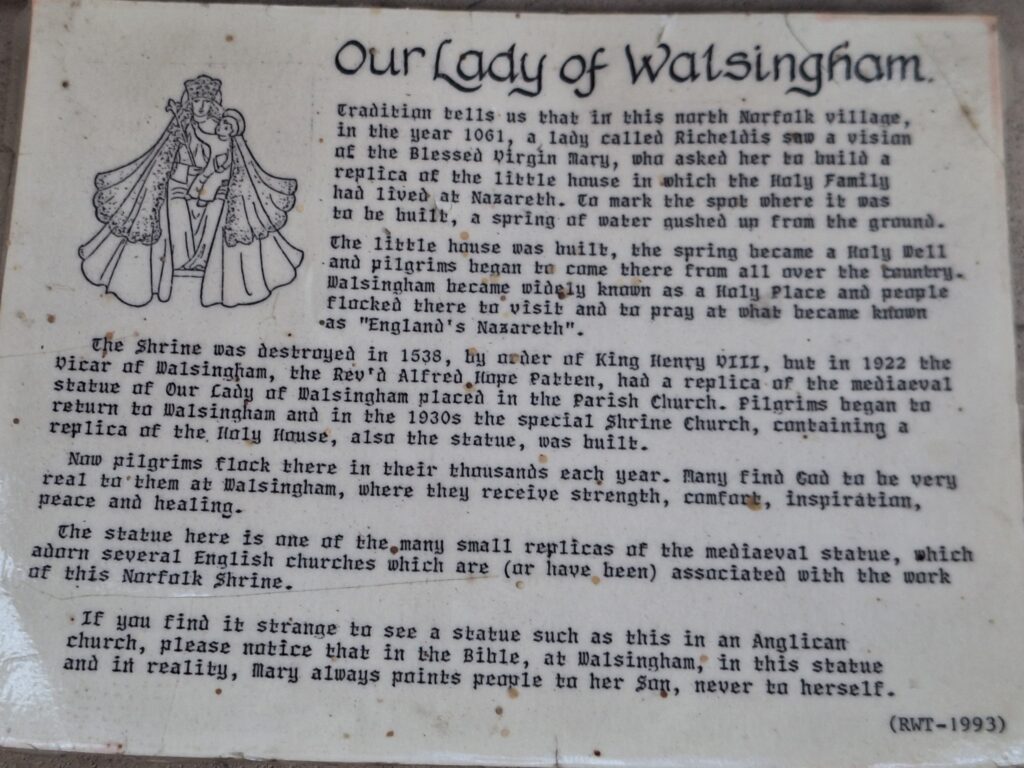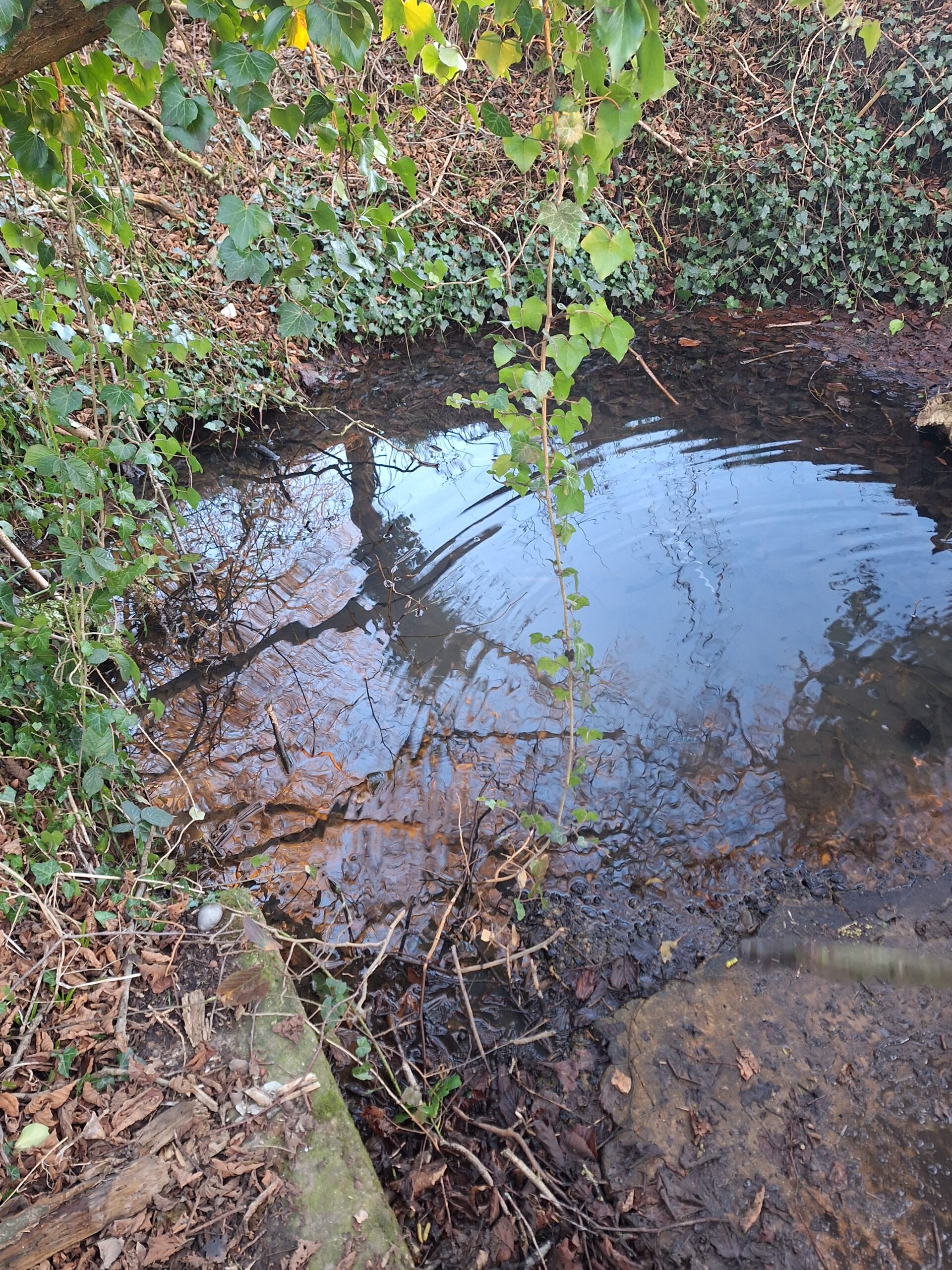It soon became apparent to us all that each church we visited had a different feeling to it and we weren’t naive about the theory of Ley Lines. These are energy lines that run through key points in the landscape. We had all been to a talk given by local Terry Johnson who had devised a map of these key points and ley lines, so we became familiar with the concept and Terry’s map had been a god send. We soon realized that there were other forms of energy lines which came from the emotions and feet of man.
Roman Roads were built between Ad 43-410 when the romans occupied Great Britain, they made these roads for military use mainly and were used until the 18th century when the systematic paving occurred and even then, they followed the roman routes. It wasn’t until the 20th century when some were retired, and others were maintained as major routes even now. The ones that are lost and forgotten still remain buried under housing estates or farmers’ fields and a few can still be viewed and walked on today. There is one such road on the approach to St Peter’s on the wall in Bradwell.
The reasons that people undertake a pilgrimage is wide and varied. It started when people flocked to the empty tomb of Christ after he rose from death and this practice of journey to worship has continued in many countries. In the UK these pilgrimages are usually linked to water, we came across one such tale in All Saints Church in Horndon – ‘Our Lady of Walsingham.

Most people refer to this journey as Psychic Questing whereas I have always seen this as a Sacred Quest. It leads us to place that have strength in faith and devotion, churches, high points, ancient wells and deep family connections, in effect we are on our own kind of pilgrimage. Both perspectives led us back to St Peter’s on the wall, it had a remnant of a roman road, and it was a place of pilgrimage. St Peters Way is a 40 mile walk that was ‘invented’ by Len Alcott in the 1970’s for the Ramblers Association and the quest group had visited several of the sites that it covers but we hadn’t traveled as far as Bradwell. Not only that it had links to several of the threads that kept popping up in the quest, so a visit was in order.
As always St Peters has a fascinating history, starting as a roman fort, then St Cedd built a church with the roman bricks, it fell in and out of religious use over the years even being a barn and a smugglers store before restoration and reconsecration. It is set high on a hill with vantage points over the river Blackwell, the coastline and over Mersea Island. It is stark and desolute on the approach flanked either side by farmers’ fields and a wind torn row of trees. The view is breathtaking on a sunny day and yet a little foreboding, it makes you feel small, this feeling only gets broken when you venture to the shoreline or to the copses of trees that nestle at a distance either side.
As always, the boys headed straight off into the historic church whilst I on the other hand was drawn to the right side where I found a dilapidated building and I got drawn down onto a pathway across the marshes towards the clearing of the church. Just past the church I came to an old relic of a watchtower. The boys joined me, and we walked further out onto the sandbank and marshes of the coast.
What struck me, as we walked, is that for each of us the centre point of the church was different, we played around on this idea and realized there was a certain width and a realization that I was seeing the house, the church and the watchtower. The strength of the church was prominent, it was saying that no matter what it endures.
Religious practices have a history of being driven underground in the UK you only have to recall the dissolution of the monasteries and the reformation to understand that Catholicism was pushed underground into houses, but no more. We have no need for a Watchtower, nothing is coming to invade us from the sea, and even if it did our communication/surveillance systems are highly advanced. Yet the Church stands proud on the landscape, a beacon of light for the soul tired. A place of sanctuary in a hostile world.
When I was finally ready to enter the church, a black beetle was crossing the threshold. Spiritually a Black Beetle calls us to honour our deep inner self, it is to step into our authentic self, it is recognition that the spiritual journey is not for the faint hearted as it means confronting our own darkness, that it takes strength and resilience and the ability to forgive. As I stepped into the church, peace enveloped me and as I gazed up at Jesus on the Crucifix, I saw the red, white and black, colours that resonate very much with the pathway. It doesn’t matter what theology you follow, what matters is that there are places where you can escape frantic noise of the world and be at peace and within that you find your own truth and that is all that matters.
By Kerry Greenaway
For further insights please check out; https://spirit-and-soul-island-crystals.square.site/s/stories/the-black-beetle
